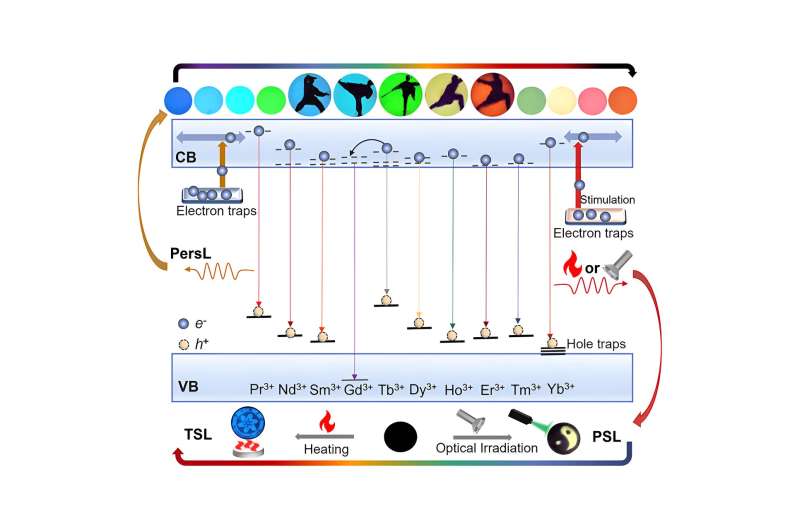This article has been reviewed according to Science X's editorial process and policies. Editors have highlighted the following attributes while ensuring the content's credibility:
fact-checked
peer-reviewed publication
trusted source
proofread
Achieving multicolor persistent and photostimulated luminescence through trap distribution engineering

Electron-trapping materials (ETMs) with persistent luminescence (PersL) or photostimulated luminescence (PSL) hold great promise for versatile applications, due to their distinctive characteristics of energy harvesting and controllable release.
However, available ETMs are generally restricted to a single mode of PersL or PSL, which impedes their applications, such as high-resolution imaging, wide-range detection, and multiple information encryption.
In a study published in Matter, the research group led by Prof. Chen Xueyuan from Fujian Institute of Research on the Structure of Matter of the Chinese Academy of Sciences proposed a unique strategy for the X-ray-activated multicolor PersL and PSL phosphors based on lanthanide (Ln3+)-doped Cs2NaGdF6, achieving for the first time both multicolor (311–1536 nm) PersL of more than one week and tunable PSL with a broad response from ultraviolet to near-infrared light.
Through thermoluminescence curves and density functional theory calculations, the researchers demonstrated that fluorine vacancies acted as electron traps whose density and depth can be tuned via Ln3+ dopants.
In addition, they revealed the trap-induced PersL and PSL mechanism of different dopants according to the calculated vacuum referred binding energy (VRBE) diagram of Ln3+ in Cs2NaGdF6.
Flexible composite films comprised of Cs2NaGdF6:Ln3+ phosphors and polydimethylsiloxane were designed to showcase their outstanding multifunctional anti-counterfeiting applications.
This study provides fundamental insights into exploring multicolor PersL and PSL materials, which accelerates the exploitation of their versatile applications for complex anti-counterfeiting and information storage.
More information: Luping Wang et al, Engineering trap distribution to achieve multicolor persistent and photostimulated luminescence from ultraviolet to near-infrared II, Matter (2023). DOI: 10.1016/j.matt.2023.09.016
Journal information: Matter
Provided by Chinese Academy of Sciences





















